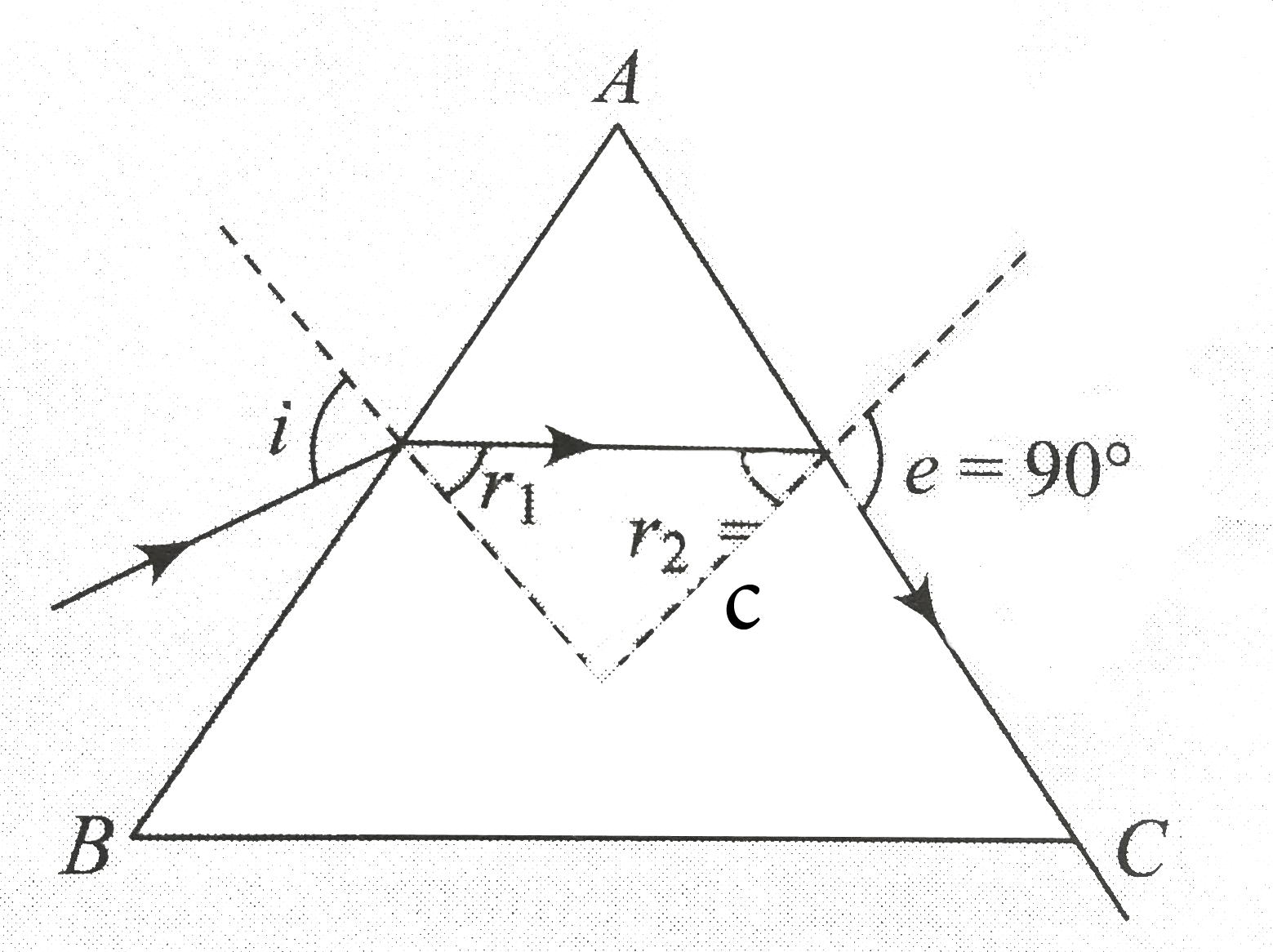Limiting angle of a prism is defined as the largest angle of the prism (A) for which no emergent ray is obtained.
(a) Find the limiting angle (A0) for a glass prism having refractive index μ.
(b) A prism has limiting angle for light of wavelength λ0. Can there be any emergent ray for light of wave- length λ<λ0.
The correct Answer is:(a) A0=2sin−1(1μ) (b) NO
Step by step video, text & image solution for Limiting angle of a prism is defined as the largest angle of the prism (A) for which no emergent ray is obtained. (a) Find the limiting angle (A_(0)) for a glass prism having refractive index mu. (b) A prism has limiting angle for light of wavelength lambda_(0). Can there be any emergent ray for light of wave- length lambda lt lambda_(0). by Physics experts to help you in doubts & scoring excellent marks in Class 12 exams.
Updated on:21/07/2023Topper's Solved these Questions
- GEOMETRICAL OPTICSBOOK - ARIHANTCHAPTER - GEOMETRICAL OPTICSEXERCISE - Level 2
62 Videos
- GEOMETRICAL OPTICSBOOK - ARIHANTCHAPTER - GEOMETRICAL OPTICSEXERCISE - Level 3
9 Videos
- ELECTROSTATICSBOOK - ARIHANTCHAPTER - ELECTROSTATICSEXERCISE - Level 3
59 Videos
- MAGNETIC EFFECT OF CURRENTBOOK - ARIHANTCHAPTER - MAGNETIC EFFECT OF CURRENTEXERCISE - Magnetic effect of Current
45 Videos
Similar Questions
What should be the minimum value of refractive index of a prism, refracting angle A, so that there is no emergent ray irrespective of the angle of incidence?

View SolutionA ray of light falls on a glass prism at a angle of incidence of 30∘. Find the direction of the emergent ray if the angle of the prism is 60∘ and refractive index is 1.50
View Solution
Knowledge Check
If the critical angle for the material of a prism is C and the angle of the prism is A, then there will be no emergent ray when
Aafter deviation it will emerge from the second refacting surfaceBit is totally reflected on the second surface and emeges out perpendicularly from third surface in air .Cit is totally reflected from the second and third refracting surface and finally emerges out from the first surfaceDit is totally reflected from all the three sides of prism and never emerges outLight falls on a prism grazing along first surface of a prism and the emergent ray is normal to the 2nd face of the prism. If D is angle of deviation then the refracting angle of the prism i
A90-2DB90-DC90−D2D180−2DA ray of light passes through an equilateral glass prism in such a manner that the angle of incidence is equal to the angle of emergence and each of these is equal to 34th of the angle of prism. The refractive index of the prism material is
A32B√2C√3D√32
A ray of light is incident on the glass prism at an angle of 40∘. Find the angle of emergence, if the angle of prism is 60∘ and refractive index is 1.5.
View SolutionA ray of light incident normally on the first face of a glass prism of refractive index 1.6 just emerges from the other face. Find the angle of the prism.
View SolutionA glass prism has a refractive angle of 90∘ and a refractive index of 1.5. A ray is incident at an angle of 30∘. The ray emerges from an adjacent face at an angle of
View SolutionWhat should be the minimum value of refractive index of a prism of refractive angle A, so that there is no emergent ray irrespective of angle of incidence?
View SolutionLight rays from a source are incident on a glass prism of index of refraction μ and angle of prism α At near normal incidence, the angle of deviation of the emerging rays is
View Solution